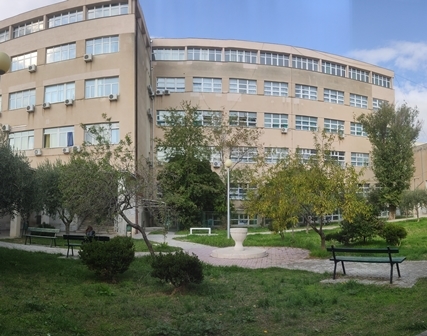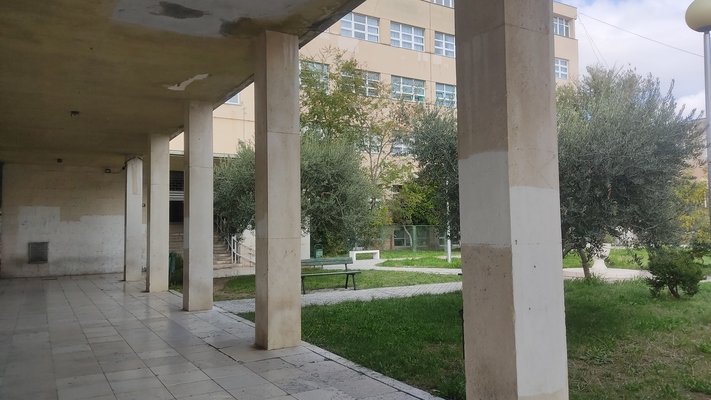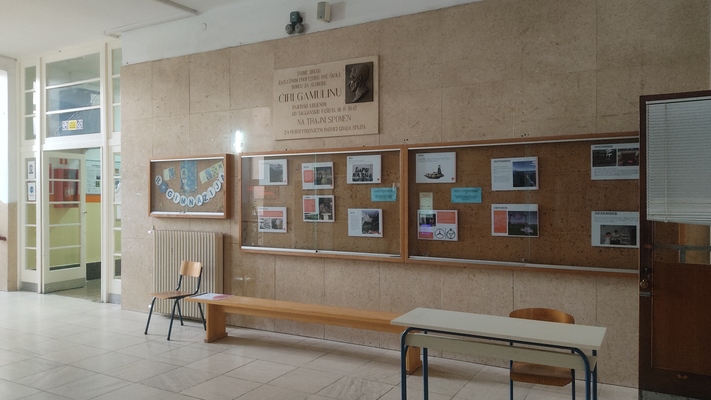
 II. gimnazija is a high school located in Split, Croatia. Split is the second largest city in Croatia and the capital of the Split, Dalmatia County. The school is located near the city centre, which features the 1700-year-old palace built by the Roman emperor Diocletian. Almost 600 students attend II. gimnazija and the school employs about 60 people. II. gimnazija is a language gymnasium, offering its students a language programme which emphasises learning foreign languages. Even though our school is a language gymnasium, our teachers and students are very much active in various areas of human and academic interest. Extracurricular activities are indeed numerous and everyone can choose something of their own interest. We are highly motivated to participate in the project because we would like to share examples of good practice, especially regarding mathematic literacy. The Science Club at our school is very active, trying to present science to less interested students and the public as something that is a part of our daily lives. The club organises exhibitions and lectures, hosts scientists, and takes part in projects. Key people in charge of the project in our school will be primarily teachers of Mathematics, as experts, backed up by Geography, languages, Arts and History teachers. Since there is a number of us, in case someone leaves their post, there will be someone who will take over. We are making sure that more people from different areas are involved in and familiar with the activities. Our Maths teachers and their students have already taken part in quite a few projects with a goal of making Mathematics more popular among students. There has been a series of popular lectures prepared and held by the students. Furthermore, one of the aims is to make people realise that Maths is fun, everywhere around us, and a part of our daily lives, which they have been proving through the Bus of Knowledge project. There is another type of experience that we find crucial for this project, and this is cooperation between Mathematics and other subjects. Our Maths teachers regularly collaborate with their colleagues who teach other subjects, such as History, Geography and Art. The goal is to identify elements of mathematics in other areas of human interest. Since our school is an e-school, we try to provide our staff and students with necessary tools for living and working in a digital world. These are used in the activities of both, the students and the teachers.
II. gimnazija is a high school located in Split, Croatia. Split is the second largest city in Croatia and the capital of the Split, Dalmatia County. The school is located near the city centre, which features the 1700-year-old palace built by the Roman emperor Diocletian. Almost 600 students attend II. gimnazija and the school employs about 60 people. II. gimnazija is a language gymnasium, offering its students a language programme which emphasises learning foreign languages. Even though our school is a language gymnasium, our teachers and students are very much active in various areas of human and academic interest. Extracurricular activities are indeed numerous and everyone can choose something of their own interest. We are highly motivated to participate in the project because we would like to share examples of good practice, especially regarding mathematic literacy. The Science Club at our school is very active, trying to present science to less interested students and the public as something that is a part of our daily lives. The club organises exhibitions and lectures, hosts scientists, and takes part in projects. Key people in charge of the project in our school will be primarily teachers of Mathematics, as experts, backed up by Geography, languages, Arts and History teachers. Since there is a number of us, in case someone leaves their post, there will be someone who will take over. We are making sure that more people from different areas are involved in and familiar with the activities. Our Maths teachers and their students have already taken part in quite a few projects with a goal of making Mathematics more popular among students. There has been a series of popular lectures prepared and held by the students. Furthermore, one of the aims is to make people realise that Maths is fun, everywhere around us, and a part of our daily lives, which they have been proving through the Bus of Knowledge project. There is another type of experience that we find crucial for this project, and this is cooperation between Mathematics and other subjects. Our Maths teachers regularly collaborate with their colleagues who teach other subjects, such as History, Geography and Art. The goal is to identify elements of mathematics in other areas of human interest. Since our school is an e-school, we try to provide our staff and students with necessary tools for living and working in a digital world. These are used in the activities of both, the students and the teachers.